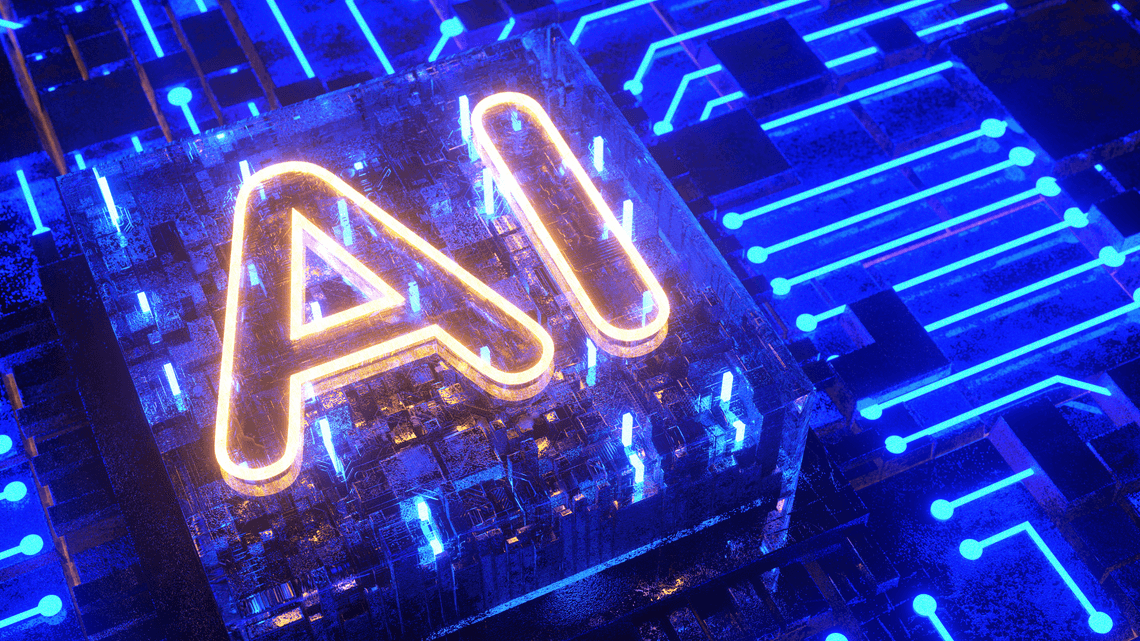
Artificial intelligence is a technology embraced by various companies worldwide. But despite its potential, the technology has yet to gain traction in most organizations. Even though major firms like Google and Amazon benefit from the technology, they are huge and generate profits from their enormous clients.
Therefore, for other thriving businesses to use AI that will make a profit, they will have to discover the challenges and ways to make this technology work for them. In this post, we will expound more on challenges faced during data preparation, network model selection, model generalization, fine-tuning, and hyperparameter tuning and how to solve them.

Data Preparation
With high-quality and well-structured data, organizations can get accurate and updated data from which their AI technology can learn. Additionally, data quality guides them to employ the appropriate data sets and have a reliable supply of relevant data that is clean, accessible, well-governed, and secure. So, how can companies ensure their data preparation process is smooth and free from irrelevant data? Companies will be required to handle the following activities:
Data Cleaning
Typically, when merging several data sources, there is a greater chance for the data to be mislabeled or duplicated. Therefore, companies will require effective practices and ways to ensure their data is clean throughout the data preparation process. Some of the practices are:
Removing data duplicates or irrelevant observations that may have occurred during data collection. Consider using the deduplication method.
Eliminating any unusual naming conventions, typos, or wrong capitalization that may result in structural errors.
Ensuring data is present by removing observations with missing values, filling the missing values, or changing how the data navigates null values more efficiently.
Data Augmentation
Cleaning data is one of the processes in a data model that is required for high-accuracy models. However, the model cannot offer appropriate accuracy and predictions if the cleaning process affects data representability. Therefore, data augmentation approaches can make machine learning models more resilient by introducing variances that the model may encounter in practice. It provides a crucial way to generate fresh data from existing ones through various modifications.
Handling Class Imbalances
Class imbalance is among the challenging tasks that machine learning algorithms categorization takes. It occurs when one label of variable data is less than another.
If such unbalanced data is fed into the learning model, it will generalize on most labels. Still, when it comes to the minority labels, it will fail to detect their patterns resulting in an overfit model.
The best practices and ways to handle class imbalance are:
Collect additional data for the minority class to increase pattern recognition for the learning model.
The proper measures can assist professionals in obtaining a generalized model due to domain analysis.
Resample the data to prevent data overfitting, especially in unbalanced settings.
For a comprehensive understanding of how data preparation can significantly impact AI outcomes, explore more at Co-one. We provide tailored solutions to ensure your data sets are primed for optimal AI performance.
Network Model Selection
Typically, model selection aims to locate an ideal network architecture that will minimize error on the data sets selected instances. Neural networks are one of the most used families. Neural networks act as neurons in the human brain since they comprise interconnected computer nodes. They help to discover data relationships and correlations using algorithms to cluster and categorize them.
Neural networks can be categorized into different models: recurrent, transformers, autoencoders, and feedforward. With these categories of neural networks, individuals have a large choice of network models to use to help them acquire data relationships and accuracy.
Some of the techniques individuals can implement for selecting and customizing network architecture include:
Identifying the main objectives and requirements of the network architecture.
Selecting an ideal network topology depending on the network’s parameters.
Choosing a network protocol that aligns with the network topology, requirements in performance, and other factors.
Adopt a network architecture model by assessing their properties, benefits, and challenges.
Analyze the various network architectures using experimenting, emulation, simulation, and prototyping techniques.
Model Generalization
Regarding model generalization, overfitting, and underfitting are two challenging factors contributing to machine learning systems’ poor performance. Typically, overfitting occurs when a model gets severely impaired when it learns the noise and other information in the practice data. This means the model picks up on the noise or random oscillation from the practice data and learns them as ideas. The challenge is that these notions do not apply to fresh data and negatively influence the model’s ability to generalize. Overfitting is more common with nonlinear and nonparametric models, which have more freedom while learning a target function.
When it comes to an underfit, it occurs when a model cannot describe the practice data and generalize to a fresh input as well. An underfit occurs mainly due to poor performance on the training data. Underfitting is frequently overlooked because it is simple to detect with a solid performance metric. One of the ideal solutions is to continue with the project and experiment with different machine-learning techniques.
To create the right balance that will prevent underfitting and overfitting, a company can:
Increase the amount of training data.
Reduce the model complexity.
Ensure that data has no noise.
Increase epochs or the period of training to improve results.
Regularization Techniques
If overfitting persists after applying the above solutions, regularization is one of the best ways to prevent it. Typically, regularization ensures that the coefficients used in the model are zero. In other words, it inhibits overfitting by lowering the learning process of a flexible or more intricate model. Regularization uses mathematical processes to create various techniques of regularization. These techniques have various effects on beta attributes. The techniques are:
Lasso Regression Technique
In lasso regression, the coefficients are penalized until they reach zero. This technique helps to eliminate unimportant independent variables. Lasso’s regressive technique is effective when there are several variables. It is because it may be employed to choose features by itself.
Ridge Regression Technique
This approach or technique is used to examine models with multicollinearity variables. It works by reducing insignificant variables and ensuring the logical ones. In this technique, the L2 norm is utilized for regularization instead of lasso regression, which is the L1 norm.
Cross Validation and Its Strategies
Cross-validation is one of the most used resampling strategies that divides datasets into training and test data. The model learns using train data, and the predictions are made using unseen test data. If the model works well on the test data and provides good accuracy, it indicates that it did not overfit and may be used for prediction.
The Hold Out Strategy
The hold-out strategy is the most basic way of evaluation and is extensively applied in machine learning. The method works by separating the dataset into the test and train sets. Typically, we have no control over the data that ends up in the test part, and the data ends up in the training part during the split unless we provide a random state. It might result in high volatility; every time the split shifts, it interferes with the accuracy level.
Leave One Out Strategy
This strategy is similar to the hold-out strategy, but the only difference is that only one observation is chosen as test data, and the rest is put as train data. After the model is trained, the second observation is chosen as test data to train the model using the remaining data. We can also use the k-fold and stratified k-fold strategies.

Fine-Tuning
When it comes to fine-tuning, the most frequent challenges are complex configurations, memory constraints, high GPU cost, and the lack of common techniques therefore, it will require advanced training to ensure that it accomplishes a specific task or operates inside a specific domain or scope of activity. This process could either use an AI model such as GPT-4, teach it to specialize in specific tasks or take an AI model trained to specialize in one task or domain. This process is referred to as fine-tuning. To perform fine-tuning accurately, the following steps can be taken:
Choosing an ideal language model to fine-tune.
Defining the task of fine-tuning.
Choosing and training ideal datasets such as Huggingface.
Review the fine-tuning process before submitting it.
Hyperparameters Tuning
Hyperparameter adjustment is an important aspect of getting accurate data from the model. Therefore, the hyperparameter values one uses will determine how efficient and accurate the AI model will be.
After completing the fine-tuning process, a professional must tweak the models using hyperparameter tuning. Hyperparameters refer to parameters that are selected when the learning process begins in the AI models. The hyperparameter tuning involves:
Choosing the appropriate model.
Examining the model’s parameter list and constructing the HP space.
Identifying search strategies for the hyperparameter space.
Using a cross-validation scheme.
Compute the model score to evaluate its performance.
For developers, programmers, and other professionals to achieve hyperparameter optimization, they must use different strategies or methods to help them achieve prediction accuracy. Some of the methods include:
Use of a Grid Search
The grid search strategy is one of the most frequently used methods that help determine the best hyperparameter values for a given model. Grid search attempts every conceivable combination of parameters in the AI model. This indicates that the entire search will take a long time and be computationally expensive.
Use of a Random Search
This strategy is different from the grid search since it uses random combinations of hyperparameter values to determine the optimum solution for the created model. One disadvantage of random search is that it can occasionally overlook the crucial values or points in the search spaces.
Hyperopt
Hyperopt provides an advanced strategy for individuals familiar with the Python language. The platform employs a unique form of optimization that allows people to obtain the optimal parameter for a given model. It can handle a model containing hundreds of parameters on a big scale. For more information, it is essential to be familiar with the four characteristics of hyperopia. These are the search space, the objective function, the min, and the trial objects.
Wrapping Up
Artificial intelligence and machine learning is a complex process that requires dedication and careful analysis. Before deciding on an AI platform, individuals should consider the problems they wish to tackle. At each step or stage of AI building, it is crucial to ensure that the AI model is responsive before moving to other steps. Therefore, once the AI model is carefully and efficiently trained using the right methods, it will function as required.


